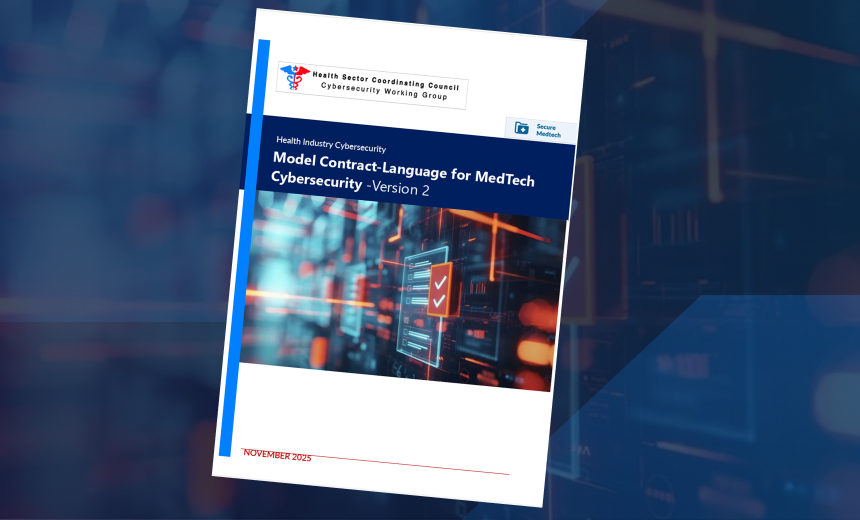Endpoint Security,
Governance & Risk Management,
Healthcare
HSCC’s Updated Model Contract Aims for Shared Cyber Risk Among Providers and Device Manufacturers

The global healthcare sector is anticipated to invest over $500 billion in medical devices this year, with an increasing number incorporating internet connectivity and artificial intelligence for enhanced functionality, spanning services from imaging to advanced monitoring systems and wearables.
See Also: Cloud Security in Healthcare: Transitioning from Reactive to Proactive Approaches
As healthcare organizations negotiate contracts with various medical device manufacturers, critical cybersecurity elements can often be overlooked or misinterpreted, according to the Health Sector Coordinating Council (HSCC).
On Wednesday, the HSCC released Version 2 of its Model Contract-Language for Medtech Cybersecurity, aimed at enabling healthcare providers and device manufacturers to better articulate cybersecurity considerations within their agreements. This update enhances clarity in responsibilities and aligns contract language with current regulatory requirements, facilitating better-informed negotiations.
This latest version builds upon feedback received from stakeholders on the initial template, first introduced in March 2022, which was aimed at integrating cybersecurity governance into medical device contracts. The HSCC notes that ambiguities surrounding cybersecurity responsibilities often lead to disputes and security inadequacies, potentially jeopardizing patient safety.
Understanding the complexities of cybersecurity accountability between medical device manufacturers and healthcare organizations is critical, given the divergent capabilities and investments in cybersecurity that exist among these parties. These disparities can escalate operational costs for healthcare organizations over the lifecycle of the products they use, complicating the negotiation process.
The revised model contract seeks to establish clearer obligations and accountability, which is essential for refining cybersecurity risk management and enhancing the negotiation of purchase agreements. Feedback from various health systems and manufacturers highlighted areas for improvement and clarity, enabling this version to adopt a more explicit language, thus reducing friction in negotiations.
This updated guidance is intended to empower healthcare organizations to articulate firm cybersecurity expectations and reinforce requirements for medical device manufacturers. By aligning contract stipulations with established standards, organizations can rely on a consistent framework rather than constructing unique requirements with each vendor. Such standardization is important as it allows for a clearer understanding of security expectations, enhancing overall patient safety.
The HSCC clarifies that this model contract is not designed to provide legal counsel but serves as a reference point for negotiations in the sector. Business owners within healthcare are encouraged to utilize this framework as a part of their broader cybersecurity risk management strategy in addressing the vulnerabilities inherent in medical device integration.
